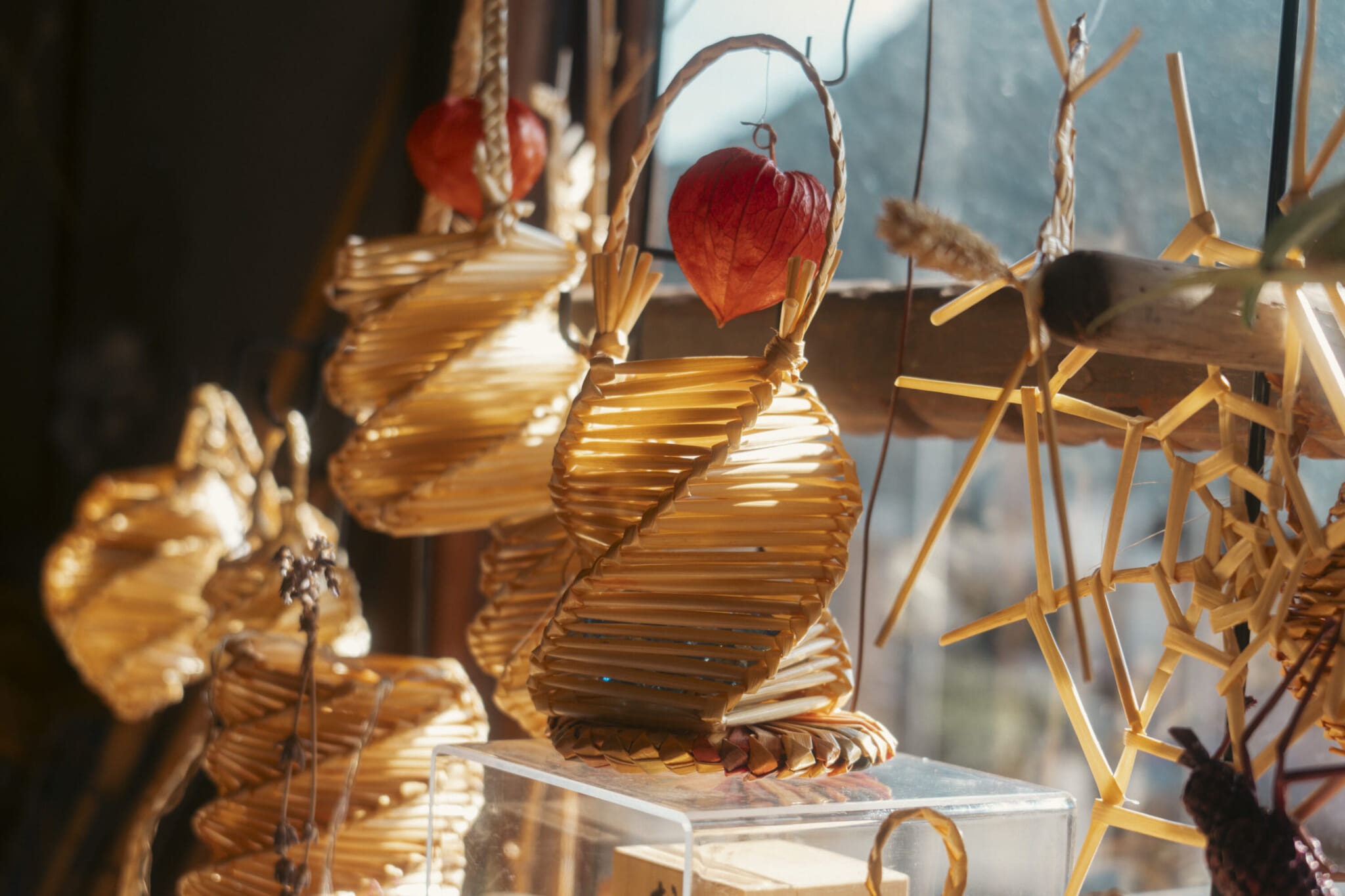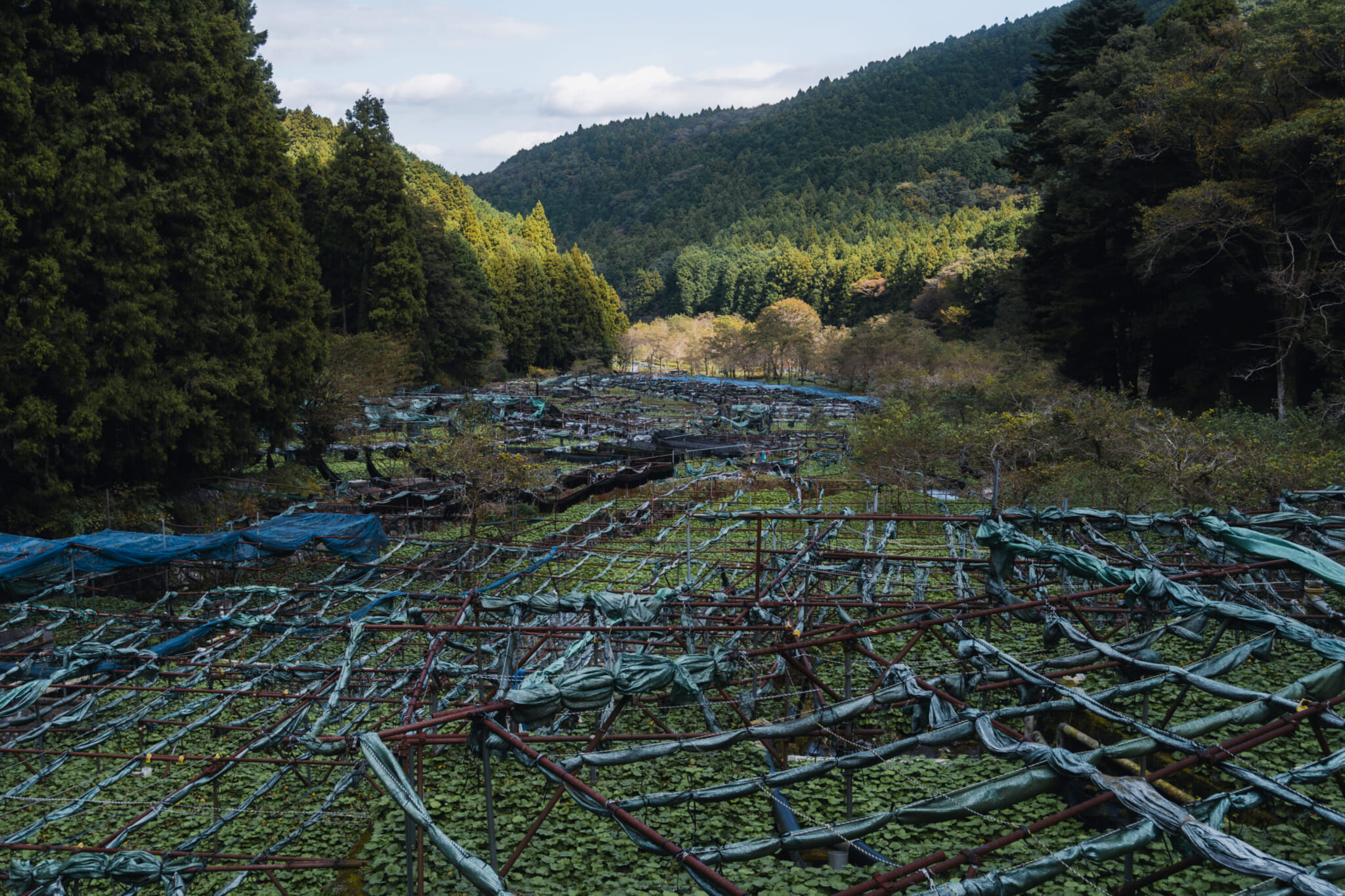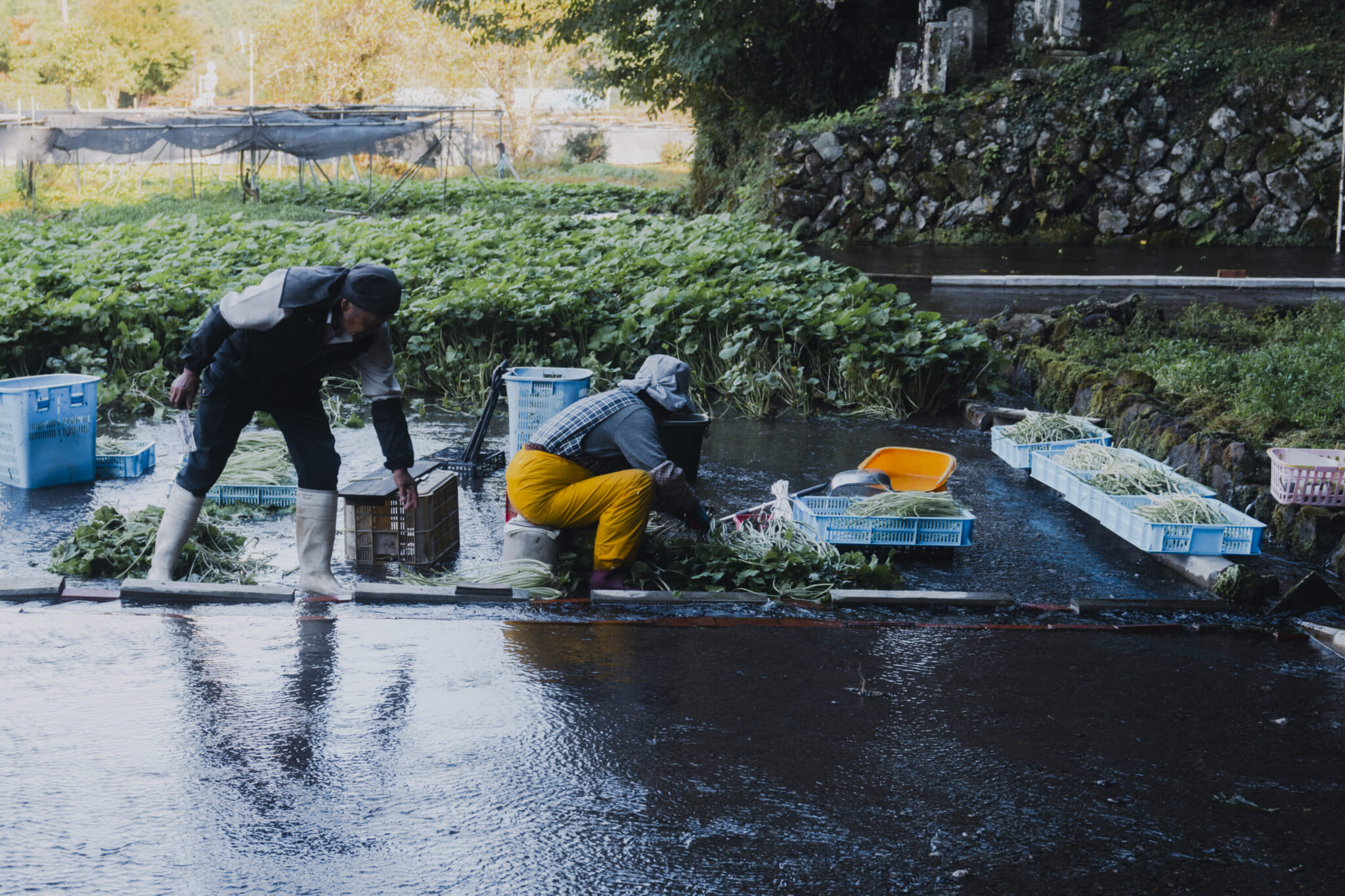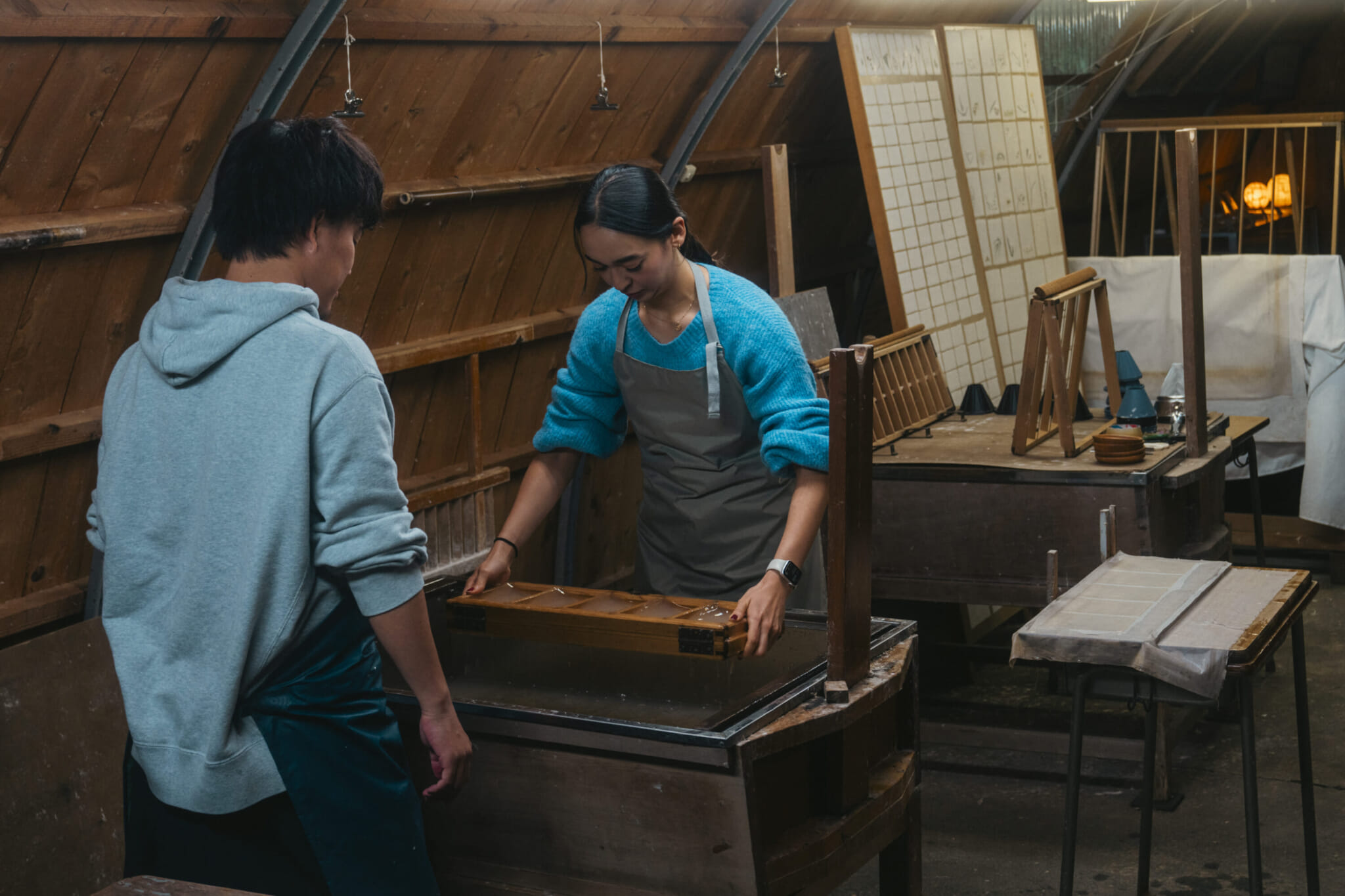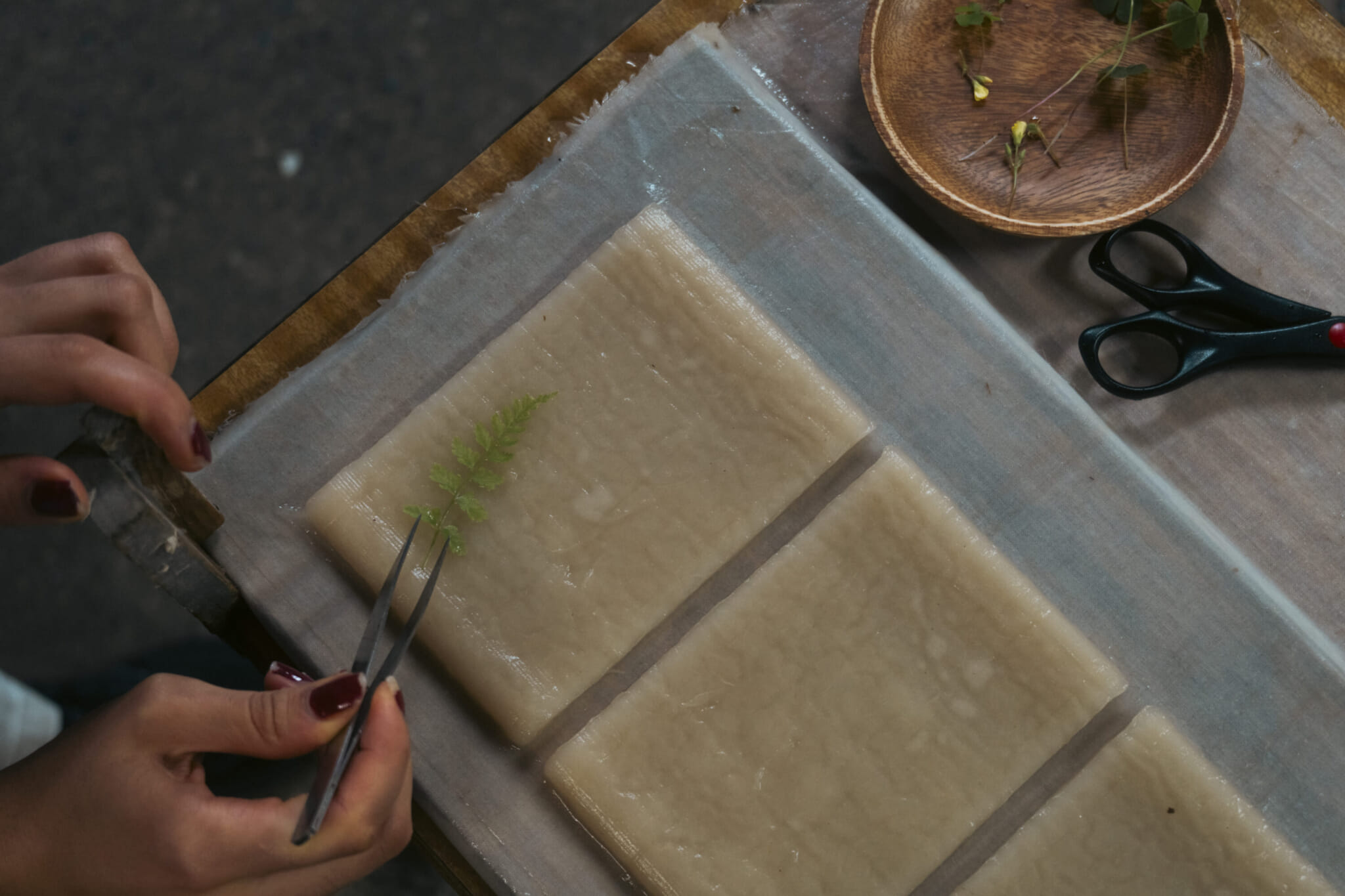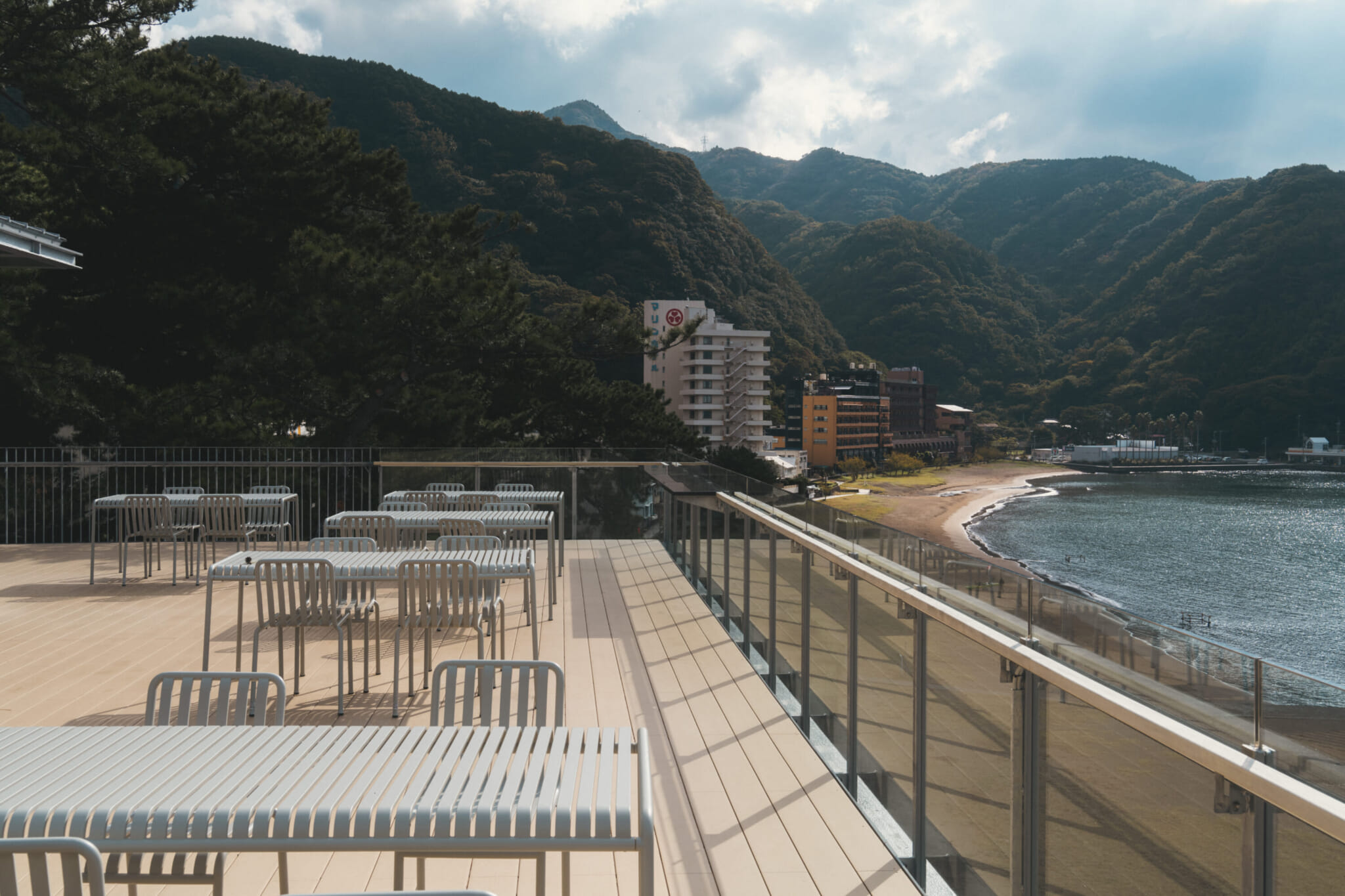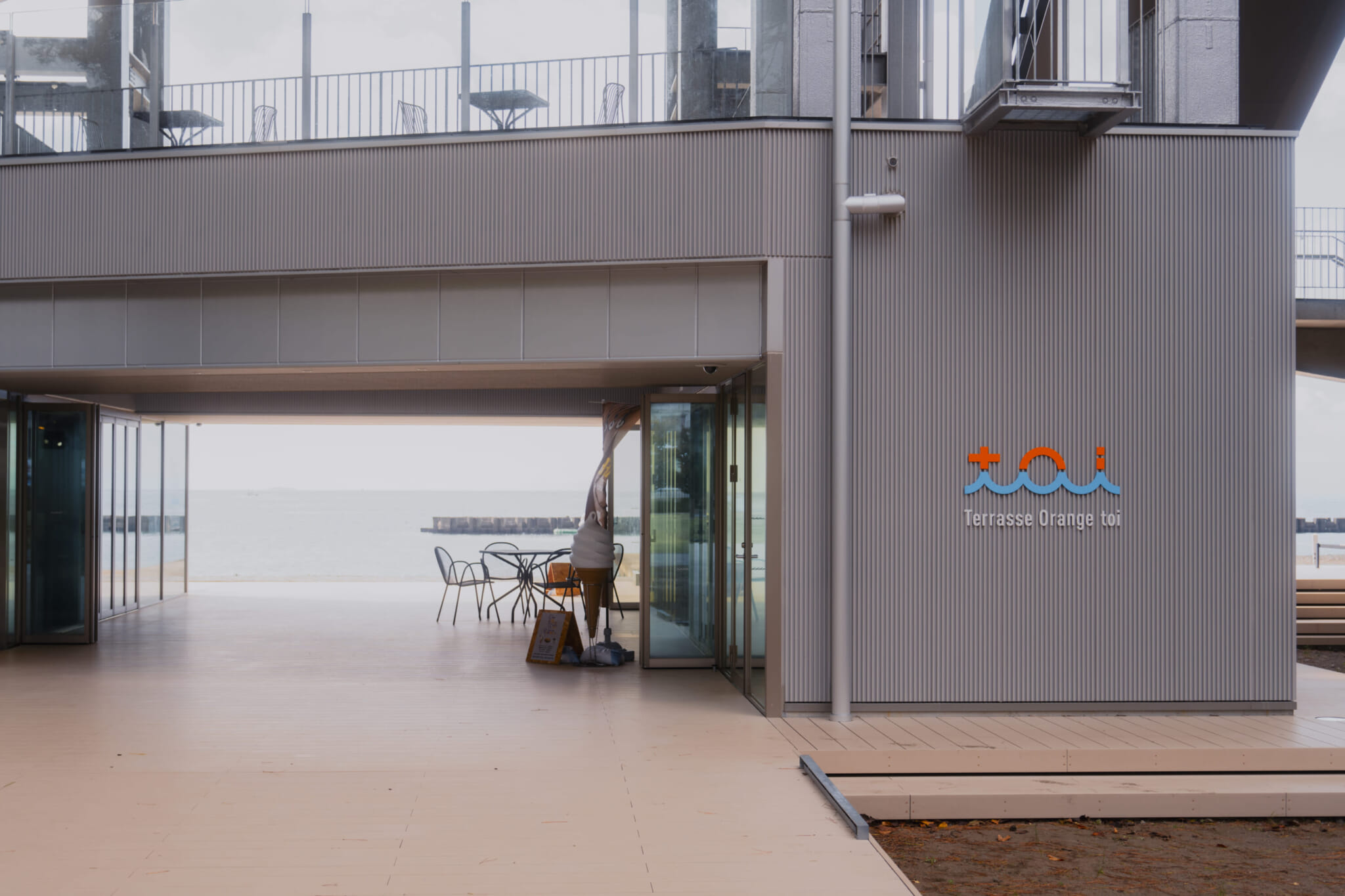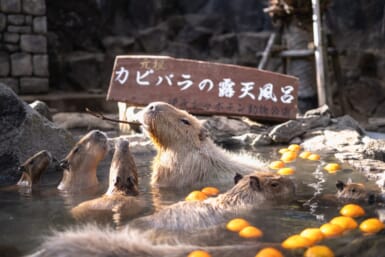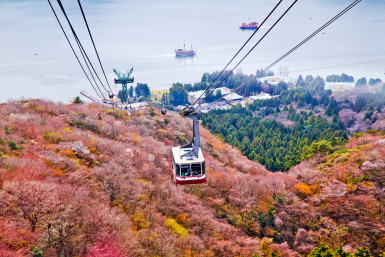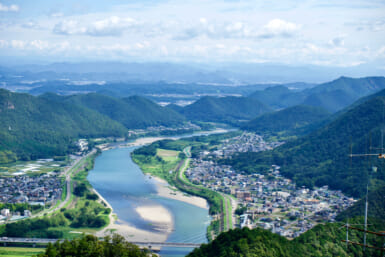Easily accessible from Tokyo and blessed with an abundance of beautiful spring waters, Shuzenji is one of the Izu Peninsula’s most popular onsen destinations. Though many come to the resort town in search of a relaxing soak, the bountiful waters of the area lend themselves to so much more than just hot spring bathing. In Shuzenji, you can try your hand at the Edo-period straw craft of mugiwara zaiku, behold the area’s expansive wasabi fields or make traditional washi paper to take home as a souvenir. With its endless options for cultural immersion, the resort town is the perfect place for travelers wanting to experience the Japanese countryside with all of their senses.
From Shuzenji, a short drive takes you to Toi, a town on the western side of Izu overlooking the vast Suruga Bay and boasting clear views of nearby Mount Fuji. The waterscape is best admired while savoring freshly caught seafood from the bay paired with local wasabi.
The abundant spring water and rocky formations of the Izu Peninsula have helped shape the history and culture of Shuzenji and Toi. At the following sites, you’ll be able to fully embrace the resulting riches by steeping yourself in the region’s craftsmanship, gastronomy and heritage.
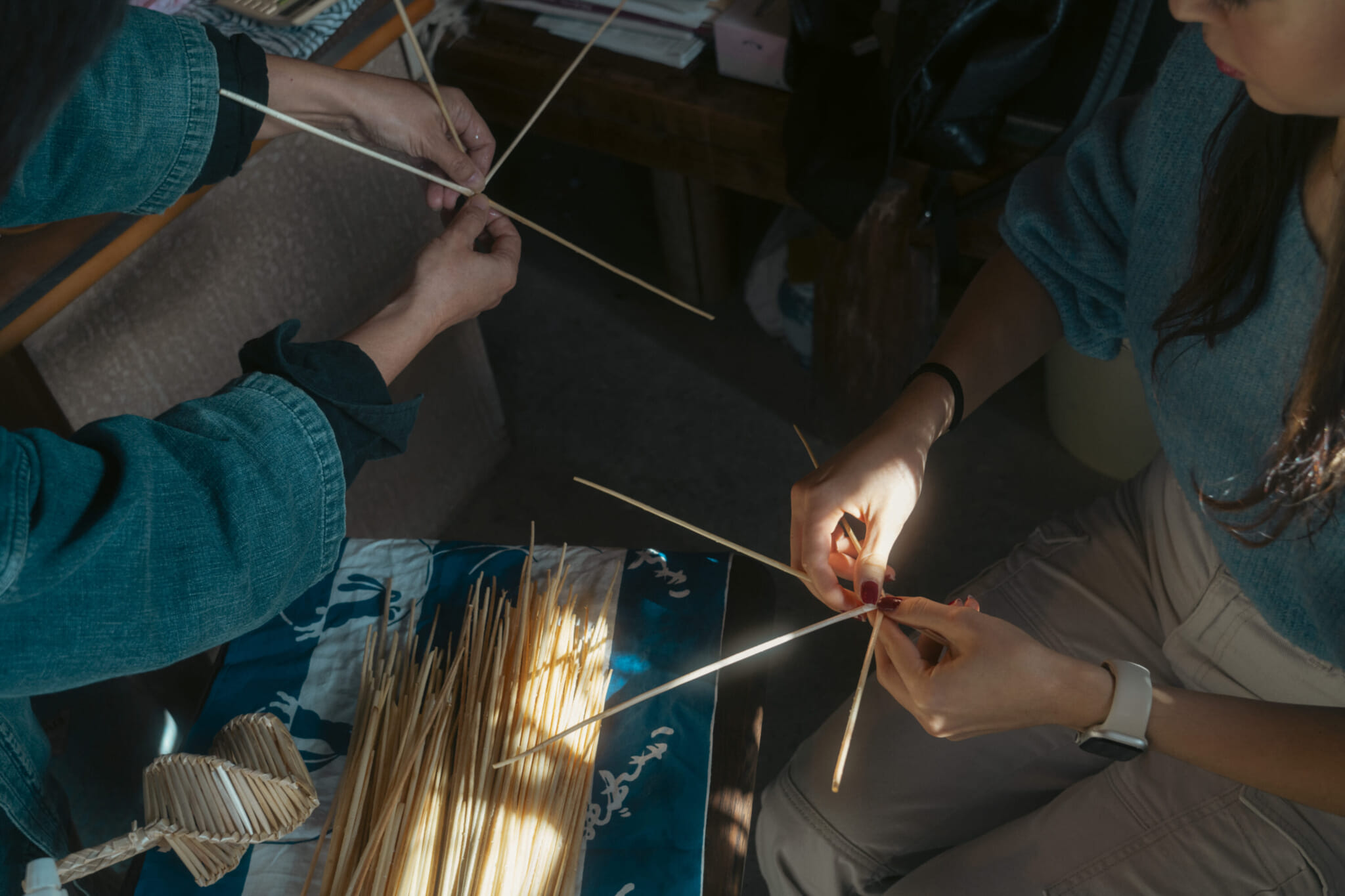
Mingei Mugiwara no Mise Ashita
Not far from the quaint Shuzenji Station is Ashita, a small mugiwara zaiku atelier with an incredible legacy. The owner, Kyoko Tsuji, is a third-generation straw artisan, and she runs the shop with her mother. Ashita offers several workshops for visitors curious to try out the traditional Japanese craft.
Inside the cozy atelier, warm sunlight streams onto the hundreds of intricate straw crafts on display as guests methodically intertwine damp strands of barley straw into a basket, wreath or animal figurine. As it’s the only workshop in Japan that carries on the tradition of Omori weaving, straw artisans travel from far and wide to learn these techniques that have been passed down for generations.
Ikadaba Wasabi Field and Tasting
Wasabi, a staple of Japanese cuisine, requires a constant and controlled supply of water to grow. Thanks to a year-round abundance of cold mountain spring water, the Izu Peninsula has for centuries been the home of Japan’s highest-quality wasabi.
Ikadaba has a beautiful expanse of wasabi fields that use the tatamiishi-style cultivation method. This Globally Important Agricultural Heritage System consisting of terraced fields built of layered rocks and sandy soil ensures that a steady supply of temperature-controlled, nutrient- and oxygen-laden water reaches each wasabi plant. In addition to being an ingenious and sustainable agricultural system, the terraces, with their flowing, mineral-rich waters and plentiful greenery, are stunning to witness.
Of course, fresh wasabi is far superior to supermarket-bought wasabi in a tube, and when in the area, it would be a grave mistake to miss out on immersing yourself in the piquant local specialty. Stop by the Izu Wasavisitor Center to learn more about the incredible history and health benefits of wasabi and taste-test fresh wasabi with varying levels of spice.
Shuzenji Kamiya Washi Factory
Japanese washi paper is globally renowned for its beauty, sustainability and softness, and Shuzenji has a long history of paper craftsmanship. Though once the official paper of the Tokugawa shogunate, Shuzenji’s washi was obsolete by the 20th century thanks to the arrival of Western paper production.
Recently, local communities have begun fighting to revive the craft of Shuzenji-gami, and now visitors can make their own washi at the Shuzenji Kamiya Washi Factory. Preserving the legacy of using the three-branched mitsumata tree as a raw material, the factory cultivates its own supply and conducts every step by hand, from stripping the bark to removing imperfections to pressing and drying.
Dip your hands into Shuzenji’s venerable tradition by creating your own washi in a papermaking workshop. There’s even the option to decorate your handmade paper with flowers and plants collected from the garden just outside. The factory will send your washi to your home once it has finished drying.
Terrasse Orange Toi
After exploring Shuzenji, Toi — a nearby seaside town — is well worth checking out. For local flavors with an ocean view, head to Terrasse Orange toi, which opened in July 2024. Standing tall alongside towering pine trees, the chic complex is Japan’s only tourist center that doubles as a tsunami evacuation site.
Overlooking Suruga Bay, Terrasse Orange toi features a footbath for guests wanting to dip their toes in local springs. Meanwhile, other area delights are on the menu at Arigato, the enchantingly named restaurant on the third floor, which takes advantage of the fresh ingredients available in Izu to craft and serve succulent seafood bowls and the locally popular wasabi bowl.
The gift shop and café on the first floor offer a further taste of local delicacies, such as biwa (loquat) compote ice cream, and the dining area transforms into the Orange-time Bar from 4:00 p.m. to 8:00 p.m. on Fridays through Sundays, offering alcoholic beverages.
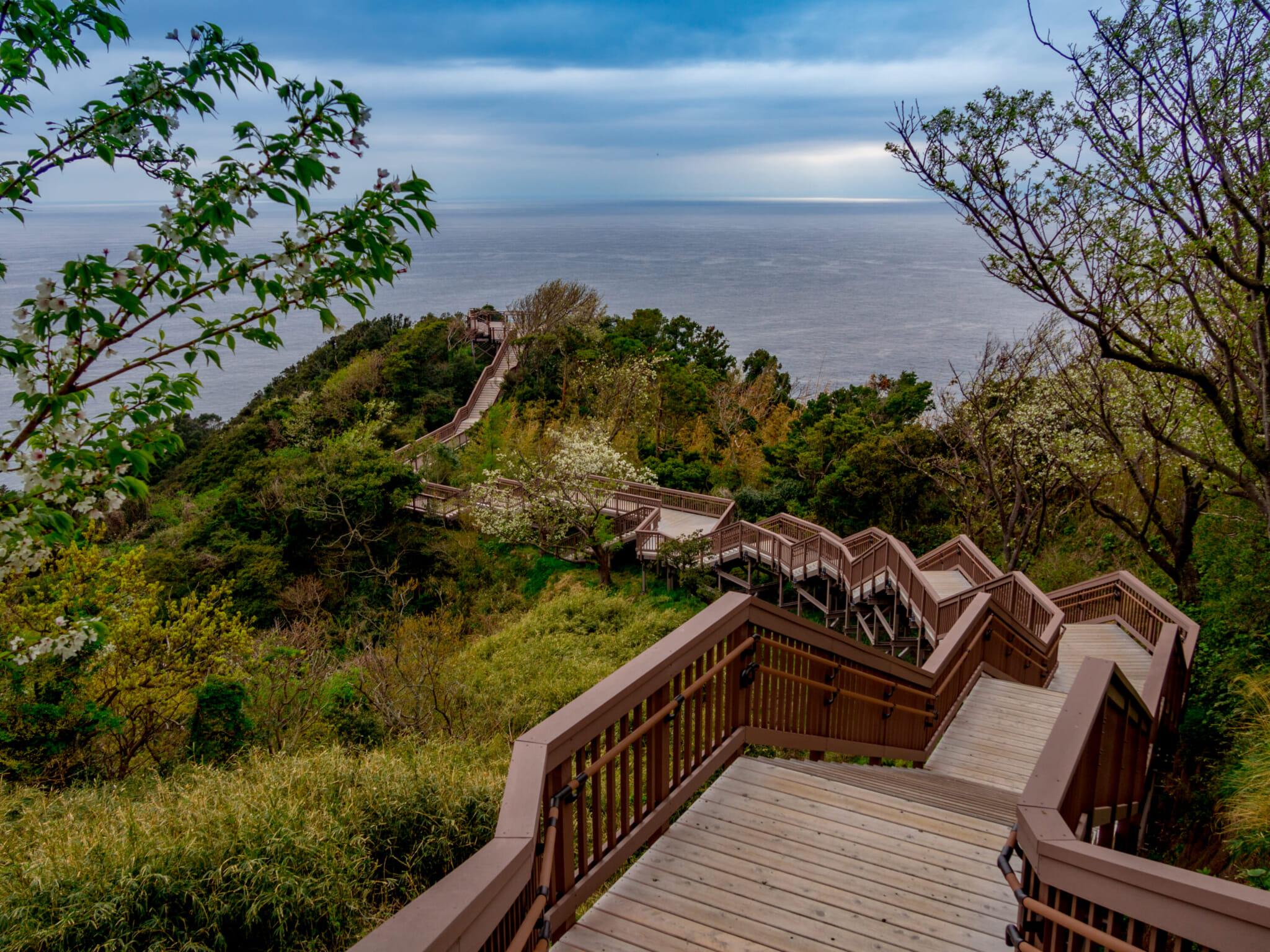
Lover’s Cape
Garnering 250,000 visitors each year, Lover’s Cape — Koibito Misaki in Japanese — is a popular “love power spot” in Toi. Tied to the legend of Fukutaro and Oyone, star-crossed soulmates who would ring bells over the ocean to profess their love for each other, the cape is a popular destination for lovers looking to deepen their connection.
While taking in the stunning view of Suruga Bay and Mount Fuji, couples can get into a wistfully romantic mood by writing their wishes on an ema plaque, ringing the bell on the observation deck and watching the bay blush with the sunset.
From Tokyo Station, take the Tokaido Shinkansen to Mishima Station, then transfer to the Izuhakone Sunzu Line for a smooth trip to Shuzenji in just 1.5 hours. You can also take the Limited Express Odoriko, which takes about 2 hours.

